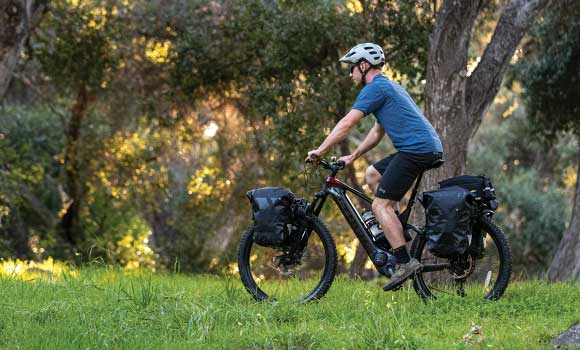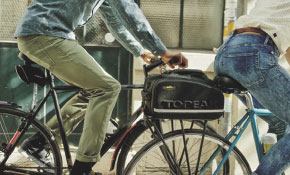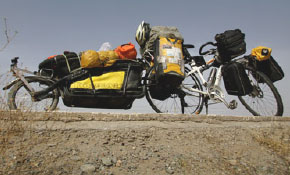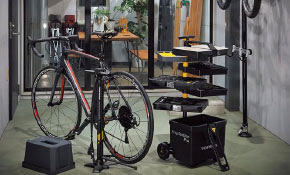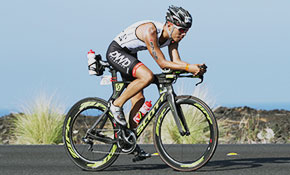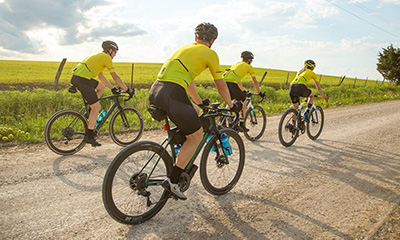FAQ
FAQ
PUMPS
-
The Road Master Blaster frame fit pump has two settings and a setting selector at the handle. The 'O' setting allows a spring in the handle to compress allowing the pump to fit onto the frame. However, excessive force (such as that used while pumping) can damage the spring. For pumping, the 'HP' setting locks out the spring for its own protection.
If the pump seems to be stuck in one of these settings, the best suggestion for troubleshooting is to take the handle apart, make sure nothing is broken, and then put it back together correctly. If you do find that something is broken, we may have replacement parts.
Here is how to disassemble the spring loading mechanism of the Road Master Blaster. The handle has three parts: the main handle body, the rotating collar, and the screw cap above the collar. Unscrew the screw cap. If the pump is in the 'O' position, the spring in the handle should be loaded and unlocked, so as soon as the screw cap is loose enough, the main handle body should shoot off. This is basically as disassembled as it gets. Make sure there is no debris or broken parts inside the handle.
To reassemble properly, the main handle body pushes against the spring (which is held onto the end of the plunger), and the threaded part of the handle body slips through the collar. The screw cap of the handle threads onto the threads of the main body of the handle. The key to the mechanism, though, is the plastic piece on the end of the plunger around which the rotating collar rests. The grooves in that plastic piece will only allow the collar to slip on one way, and allow it to rotate in a very specific plane. At one setting on the rotation, (the 'SP' setting) the collar is held in place and the spring is effectively locked out. In the 'O' setting, the collar can slip out and so the spring is allowed to compress.
Bag
-
The water repellant coating will gradually wear off from use. We suggest occasionally reapplying a durable water repellent (DWR) spray on Cycling Wallet to maintain water repellency.
LIGHT
-
Your battery gets very warm when you recharge it because a chemical reaction occurs. The battery may reach temperatures of up to (104˚F/40˚C) during charging. This is normal and causes no harm to the battery. If the battery is not drained completely before charging, it may also get warm. Again, this is safe and causes no harm to the battery, however, we suggest you drain the battery before charging to enhance its service life.
-
When using Topeak's recharging system the battery must first be drained to reach its maximum capacity. The Topeak recharger has an auto cut off system when the battery capacity is full. Once full, the charger will switch to a trickle-mode maintenance system and will not overcharge the battery. Even though the charger has an auto cut-off feature, it's not generally good practice to leave the battery connected to the charger continuously for over 48 hours. Topeak recommends disconnecting both the battery from the charger and the charger from the power outlet when not in use. Warning: Do not attempt to use any other charger with this system. This will damage the battery and void the warranty.
-
The durability of a rechargeable battery depends on various factors; type of cell, strain, as well as the maintenance routine. Generally, the higher the battery capacity, the longer the burn time. Durability varies from 300 to 500 charge/discharge cycles before the capacity becomes ineffective (80% of it's nominal value). With good care, a battery life span of approx. 3-5 years is achievable.
-
Ni-MH batteries have a durability of approx. 500 cycles. Li-Ion batteries have a durability of approx. 300-500 cycles. In calculating durability, the life span of the battery is not the only factor for actual service life. The maintenance routine is also important.
-
Typical life span for lamps are - approximately 1000 hours for 10W Solarc lamp, approximately 2,000-3,000 hours for a halogen lamp and approximately 10,000 hours for LED.
-
No. Although your lighting system is water resistant, it is not waterproof. Your lighting system will work fine in the rain, snow or damp conditions, however, submerging your system underwater will flood the system and void the warranty.
-
At low temperatures, particularly near or below freezing, battery voltage and capacity decreases significantly. At freezing, capacity is decreased by 5% to 10% (run time is decreased 50%). The loss of capacity of cells at a temperature of -20˚C can be almost 30% (run time is decreased 70%). This effect is temporary and the battery will not be harmed. Normal battery capacity and voltage returns when ambient temperature is (70˚F/20˚C). Additionally, battery temperature should never exceed 140˚F/60˚C during operation or storage.
-
When stored at room temperature (about 75˚F/23˚C), your battery will lose about 1% of its capacity per day. At 104˚F/40˚C, it will lose about 5% per day.
PAKGO X
-
1. MTB’s with 27.5” x 2.4 or larger tires
2. Fat tire bikes
3. MTB’s with rear dropout spacing over 135mm with 15mm or 20mm rear thru axles
4. E-bikes or Pedelec bikes
5. Bikes with integrated seatposts or seat tube height over 64cm (center of BB to top of saddle)
6. Bikes with single leg front forks
7. Bikes with permanently mounted handlebars and stem. Certain Time Trial / Triathlon bikes (Cervelo - P5X, Diamondback – Andean, Ventum – All models).




